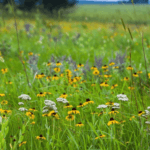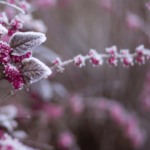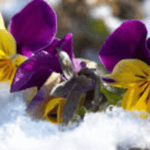
Beautiful flowers gardenia Plants For Your homes

Explore the world of stonecrop sedum, a group of tough succulent plants that have won over gardeners. With over 400 types, most from China, these perennials are loved for their toughness, easy care, and ability to grow in poor soil. They are versatile, fitting well in many climates, from zones 4-9.
The name “Sedum” comes from the Latin “sedo,” meaning “to sit,” fitting their ground-hugging nature. These plants are great for surviving drought and come in many shapes, from spreading groundcovers to tall plants. They’re perfect for rock gardens, borders, and pots, adding beauty with their thick leaves and bright flowers.
Stonecrop sedum is great for both experienced and new gardeners. They’re easy to care for, making them ideal for those with little time or gardening knowledge. Let these hardy plants turn your garden into a colorful and textured paradise.
Start a fascinating journey into the world of Stonecrop Sedum. Here, nature’s strength meets easy landscaping. These evergreen perennials are perfect for gardeners. They bring colors, textures, and shapes that make any outdoor area better.
Stonecrop Sedum plants are incredibly versatile. They do well in many places and ways. From rock gardens to green roofs, they fit right in. Their tough nature and pollution resistance make them great for all gardeners, new or experienced.
Consider the Autumn Charm™ Sedum, found at Gertens with SKU: P5650-C. It grows 13 to 24 inches tall and spreads 12 to 24 inches wide. It’s a fast-growing groundcover that does well in both dry and moist spots. With proper care, it can live up to 15 years.
The Sedum genus is full of variety, with hundreds of species and types. You’ll find everything from striking border sedums (Hylotelephium) with bright pink flowers to low sedums that spread out. There’s a Sedum for every garden.
| Sedum Variety | Key Features |
|---|---|
| Sedum reflexum | Low-growing, needle-like leaves, yellow flowers |
| Sedum dasyphyllum | Compact, blue-green leaves, pink or white flowers |
| Sedum morganianum ‘Burrito’ | Trailing stems, plump leaves, pink flowers, ideal for hanging baskets |
As you dive into the world of Stonecrop Sedum, let your imagination soar. These resilient plants offer endless possibilities. Whether you’re making a rock garden, adding texture to a border, or looking for a groundcover, Sedum plants will enchant you with their beauty and ease.
Stonecrop plants, part of the Sedum genus, are loved by gardeners all over the world. They come from China and North America, with over 400 types. These cold-hardy succulents and adaptable perennials fit well in any garden.
The Sedum genus includes plants like Hylotelephium too. They are known for their wide variety in growth, leaf colors, and flower shapes. Their leaves store water, helping them survive in different conditions.
Sedum plants are divided into two main types based on how they grow:
Stonecrop plants are known for being tough and adaptable. Many can live in zones 4-9, fitting many climates. These cold-hardy succulents do well in poor soil and are resilient.
They like full sun but can handle some shade. Sedum plants need well-drained soil and should be planted with enough space, depending on their size.
| Sedum Type | Height | Spread | Flower Color |
|---|---|---|---|
| Sedum humifusum | 2-3 inches | 12-18 inches | Yellow |
| Sedum ‘Autumn Joy’ | 18-24 inches | 18-24 inches | Pink to Rusty Red |
| Sedum ‘Blue Spruce’ | 6-8 inches | 12-18 inches | Yellow |
Once they’re set, Stonecrop plants need little care and water. They’re perfect for gardens that are easy to maintain or for busy gardeners. With their toughness, flexibility, and variety, Sedum plants can make beautiful, lasting landscapes.
Stonecrop sedum plants are known for their unique look in gardens. They have fleshy leaves in many colors, shapes, and textures. These leaves store water, helping the plant survive in dry times.
Sedum plants are famous for their star-shaped flowers that grow in clusters. These flowers come in colors like pink, red, yellow, and white. They attract butterflies and bees in late summer or early fall, adding color to the garden.
Sedum leaves are thick and fleshy, storing water for dry times. They can be round, needle-like, or flat, depending on the type. Some leaves have striking color patterns, adding beauty even when not blooming.
The star-shaped sedum flowers are small but many, forming beautiful clusters. These flowers last long, offering color and food for pollinators.
Sedum plants grow in two main ways: as creeping groundcovers and upright varieties. Creeping sedums, like ‘Angelina’ and ‘Dragon’s Blood’, spread out and are great for groundcovers or rock gardens.
Upright sedums, such as ‘Autumn Joy’ and ‘Brilliant’, grow taller and form clumps. They have foliage and flower stalks that add height and beauty to gardens.
| Growth Habit | Height | Uses |
|---|---|---|
| Creeping | 1-6 inches | Groundcovers, rock gardens, between stepping stones |
| Upright | 6 inches to 2-3 feet | Borders, mass plantings, vertical interest |
Sedum plants have roots that spread out instead of digging deep. This helps them get water and nutrients from the soil surface. They do well in poor or rocky soils and are great for green roofs.
The special features of sedum plants make them versatile in gardens. They can be groundcovers, rock garden plants, or upright accents. Sedums add beauty and toughness to any landscape.
There are hundreds of sedum species and cultivars for gardeners to choose from. These plants fit every garden style and purpose. Some top Hylotelephium and sedum varieties include:
Boogie Woogie Sedum is a fun groundcover for any garden. Its leaves are green with creamy white edges. In summer, it blooms with bright yellow flowers, drawing in pollinators and adding color.
This sedum is easy to care for and perfect for rock gardens, sunny spots, and dry areas. It grows well in zones 3-9.
SunSparkler® Lime Zinger Sedum is a lovely mounded groundcover. Its leaves are apple-green with cherry red edges. In late summer, it blooms with soft pink flowers, adding sweetness to the garden.
This sedum grows 4-6 inches tall and 16-18 inches wide. It’s great for dry walkways, rock walls, and borders. It thrives in zones 4-9.
Autumn Joy Sedum, also known as Hylotelephium ‘Herbstsfreude’, is a classic upright variety. It’s a favorite in many gardens. Its large pink flowers turn to rich bronze-red in fall, lasting for a long time.
This sedum grows up to 24 inches tall and wide. It looks great with ornamental grasses and other late-season perennials. It’s hardy in zones 3-8.
Lemon Drop Sedum is a low-growing groundcover that lights up the garden early in summer. Its leaves are dark green, and the plant is covered in lemon-yellow, star-shaped flowers. As fall comes, the foliage turns a vibrant red.
This sedum is perfect for zones 4-8 and loves well-drained soil.
Cauticola Sedum forms a beautiful carpet of purple stems and bluish-gray leaves with purple spots. In fall, it blooms with pink flowers, contrasting nicely with the foliage. This sedum is ideal for rock gardens, alpine plantings, and dry borders.
It adds texture and color to the landscape and is hardy in zones 5-9. It requires little care once it’s established.
| Sedum Variety | Plant Type | Hardiness Zones | Key Features |
|---|---|---|---|
| Boogie Woogie Sedum | Groundcover | 3-9 | Green leaves edged in cream, bright yellow flowers |
| SunSparkler® Lime Zinger Sedum | Groundcover | 4-9 | Apple-green leaves ringed in cherry red, soft pink flowers |
| Autumn Joy Sedum | Upright | 3-8 | Large clusters of pink flowers that deepen to bronze-red |
| Lemon Drop Sedum | Groundcover | 4-8 | Dark green leaves, lemon-yellow flowers, vibrant fall color |
| Cauticola Sedum | Groundcover | 5-9 | Purple stems, bluish-gray leaves spotted with purple, pink star-shaped flowers |
Adding Stonecrop Sedum to your garden brings many rewards. It excels in hot, dry spots, needing little water once it’s set. Its leaves and stems store water, making it perfect for dry areas. This plant also keeps soil stable and stops erosion, helping your garden.
Stonecrop Sedum draws pollinators like butterflies and bees. Its flowers provide nectar and pollen, especially when other plants are done blooming. This supports your local ecosystem’s balance.
Stonecrop is more than just beautiful; it’s versatile. You can find varieties like Boogie Woogie Sedum and SunSparkler® Lime Zinger Sedum. These plants grow at a good pace, keeping your garden beautiful and easy to manage.
| Benefit | Description |
|---|---|
| Drought Tolerance | Stonecrop thrives in hot and dry conditions, requiring minimal watering once established. |
| Pollinator Attraction | The star-shaped flowers attract a variety of pollinators, supporting biodiversity. |
| Soil Stabilization | Stonecrop helps stabilize soil and prevent erosion, acting as an eco-warrior. |
| Low Maintenance | With its succulent nature and moderate growth rate, Stonecrop is a low-maintenance choice. |
| Versatile Varieties | The Sedum genus offers a wide range of varieties, each with its unique charm and characteristics. |
Stonecrop Sedum is a stunning and purposeful addition to your garden. It’s perfect for xeriscaping, saving water in gardens. Plus, it’s deer-resistant, keeping your garden looking great without worrying about damage. Its history in treating skin issues and current studies on anti-inflammatory properties suggest it could have more benefits.
Embrace the beauty of Stonecrop Sedum and watch your garden flourish. By caring for these plants, you’ll attract pollinators, save water, and have a garden that’s easy to maintain. Your garden will be a source of inspiration and joy for years to come.
Stonecrop sedum plants are a great choice for water-wise gardening and xeriscaping. They love hot and dry places, making them perfect for saving water. Adding these plants to your garden means you get a beautiful look with less water and upkeep.
Stonecrop sedum’s ability to survive drought comes from being succulent. They store water in their leaves and stems. With over 400 species, they’re great for areas where other plants can’t make it.
Dymondia margaretae, a ground cover from South Africa, is a great example. It can save you up to $3,500 a year on water and upkeep. Using drought-resistant plants like Dymondia and stonecrop sedum makes your garden beautiful and eco-friendly.
Stonecrop sedum is easy to care for once it’s grown. They fit in USDA zones 3-9 and like full sun to partial shade. Their leaves come in unique shades of green and they’re not invasive.
| Sedum Variety | USDA Hardiness Zones | Mature Size |
|---|---|---|
| White Sedum (Sedum album) | 3-9 | 3-6″ tall, 12-18″ spread |
| Cascade Stonecrop (Sedum divergens) | 4-9 | Spreads several feet |
| Pink Mongolian Stonecrop (Hylotelephium ewersii) | 3-8 | 4-6″ tall, 12″ spread |
| ‘Blue Spruce’ Sedum (Sedum reflexum ‘Blue Spruce’) | 4-9 | 3-6″ tall |
| ‘Angelina’ Stonecrop (Sedum rupestre ‘Angelina’) | 3-9 | 4-6″ tall, 1-3′ spread |
Once they’re set, stonecrop sedum plants need little water and care. They’re mostly pest-free, but slugs, snails, and birds might visit them. These plants bloom for a long time and attract pollinators, making them a great choice for a drought-resistant garden.
Imagine your garden buzzing with life, filled with butterflies and bees. By adding stonecrop sedum, you can make a haven for these vital pollinators. Sedum flowers have star-shaped clusters that are easy for pollinators to get to.
Sedum plants, especially Autumn Joy, are popular for supporting pollinators. A survey by Honey Bee Suite shows Autumn Joy is a favorite for honey bees. With over 60-70 named types, sedum is becoming more popular for bee-friendly gardens.
Butterflies love sedum flowers too. The flat-topped clusters are perfect for them to land and get to the nectar and pollen. Adding sedum to your garden can attract many butterfly species, making your space colorful and lively.
Stonecrop sedum blooms late, which is great for pollinators. Varieties like Autumn Joy bloom in late summer and fall. This is when most plants stop blooming, so it’s crucial for pollinators.
Having nectar and pollen late in the season is very important. Over a third of our food crops need pollinators to reproduce. Honeybees add about $15 billion in value to crops through pollination. Sedum helps support pollinators’ health and well-being by offering food late in the season.
| Pollinator | Benefits of Sedum |
|---|---|
| Honeybees | Easily accessible nectar and pollen, late-season food source |
| Butterflies | Flat-topped flower clusters for landing, attracts various species |
| Hoverflies | Provides food and shelter, helps control aphid populations |
| Ladybugs | Attracts beneficial insects that prey on garden pests |
Other plants like black-eyed Susan, clover, bee balm, and purple coneflower also help pollinators. Mixing these with sedum creates a welcoming space for butterflies, honeybees, and other pollinators all season long.
Use sedum flowers to turn your garden into a haven for pollinators. Their vibrant colors, easy care, and appeal to butterflies and bees make them essential for any gardener wanting to help pollination.
Stonecrop sedum plants are a dream for gardeners wanting to add visual interest. They come in many colors, shapes, and textures. These perennials can turn a dull garden into a beautiful oasis. They change with the seasons, offering a fresh look from spring to fall.
Stonecrop sedum is known for its wide range of colors. You can find everything from deep burgundy to lime green leaves. With over 400 species, you can create a stunning mosaic in your garden.
Sedums also come in different leaf shapes and textures. Some leaves are round and fleshy, others have pointy edges. Mixing different sedum species adds depth and dimension to your garden.
Sedums are more than just pretty; they put on a show with their blooms. From summer to fall, they produce star-shaped flowers in pink, yellow, and white. These blooms are perfect for rock gardens, borders, and containers, drawing the eye and creating focal points.
| Sedum Variety | Bloom Color | Bloom Time |
|---|---|---|
| Autumn Joy | Pink to Copper | Late Summer to Fall |
| Lemon Drop | Yellow | Early Summer |
| Sedum album | White | Mid-Summer |
Some stonecrop varieties change color with the seasons, offering dynamic interest. For example, Sedum ‘Autumn Joy’ turns from green to pink to a rich copper in fall. This change adds surprise and delight to your garden.
Adding a variety of stonecrop sedum plants to your garden creates a colorful, textured landscape. They are low-maintenance and beautiful all year. Sedums are perfect for gardeners who want to add beauty and resilience to their outdoor spaces.
To make sure your stonecrop sedum plants do well, follow these planting and care tips. These tough succulents come from North America, Europe, and Asia. They can grow in many places but do best with the right care. Give them the best conditions, and you’ll get beautiful, easy-care perennials that make your garden look great.
The best times to plant stonecrop sedum are in the cooler seasons of fall and spring. These times have milder temperatures and more soil moisture, helping the plants get a strong start. Sedum plants grow well in USDA Hardiness Zones 3-10, fitting many climates.
Stonecrop plants like soil that drains well and can handle poor soil. But they don’t like standing water or heavy clay. Add sand or perlite to your soil to improve drainage. They do best in slightly acidic to neutral soils, with a pH of 6.0 to 7.5. Planting succulents like sedum in the right soil is key to their success.
Most sedum types need at least six hours of direct sunlight a day to thrive. Some can take partial shade, but they usually prefer lots of sun. Make sure your sedum gets enough sun to stay healthy and colorful.
Once they’re established, stonecrop sedum can handle drought and needs little water. Too much water can harm them, causing root rot and other problems. Let the soil dry out between waterings, and cut back on watering in rainy periods. In most places, ‘Autumn Joy’ stonecrop only needs watering every one to two weeks in summer, unless it’s very dry.
Putting a 2-3 inch layer of organic mulch around your sedum plants has many benefits. Mulch keeps soil moist, controls soil temperature, and stops weeds. Choose a mulch that drains well, like gravel or pebbles, to prevent too much moisture around your plants.
| Planting Factor | Recommendation |
|---|---|
| Planting Time | Fall or Spring |
| Soil Type | Well-drained, slightly acidic (pH 6.0-7.5) |
| Sun Exposure | Full sun (at least 6 hours daily) |
| Watering | Minimal, once established (drought-tolerant) |
| Mulching | 2-3 inch layer of well-draining organic mulch |
Follow these tips for planting and caring for your stonecrop sedum, and they’ll thrive. With the right conditions and little upkeep, these full sun perennials will give you beautiful leaves and flowers every year. They’re a great choice for any garden or landscape.
Stonecrop sedum plants are easy to care for but still need some attention to stay beautiful. Pruning them is optional but can make them look better. Deadheading flowers also helps by making the plant look neat and encouraging more blooms.
Creeping sedums need trimming to keep them from spreading too much. For upright sedums, pruning in spring makes them look fuller. Always use sharp shears to cut the plant without hurting its leaves and stems.
Deadheading means cutting off old flowers to keep your plant looking nice and to get more blooms. Just cut the old flowers at the base with your fingers or shears. Doing this often makes your stonecrop plants bloom longer.
Stonecrop sedum is usually pest-free but can get eaten by slugs and snails. Use insecticidal soap or neem oil to keep them away. Or, you can pick them off your plants and drown them in soapy water.
In dry times, birds might eat sedum leaves looking for water. To stop this, use netting or reflective pinwheels around your plants. These won’t hurt the birds but will keep them away from your sedum.
| Pest | Control Method |
|---|---|
| Slugs and Snails |
|
| Birds |
|
By following these easy tips for maintenance and pest control, your stonecrop sedum plants will stay healthy and look great all season.
In the world of resilient perennials, stonecrop sedum plants are a true wonder. They are loved by gardeners and nature lovers for their ability to adapt and look beautiful. With colors like Boogie Woogie Sedum and the sweet look of Lemon Drop Sedum, there’s a type for every garden.
Stonecrop sedums are known for being tough. They do well in tough places, like dry spots and rocky areas. They can survive without much care because they store water in their leaves and stems. This makes them great for gardens that need a little less attention.
These plants also bloom for a long time, making your garden look great. They help bees and butterflies by offering them food. When you add stonecrop sedum to your garden, you’re not just making it look nice. You’re also showing the strong side of nature.
To make the most of these plants, just give them good soil, lots of sun, and water now and then. With a little care, stonecrop sedum can turn your garden into a beautiful place full of life and color.




